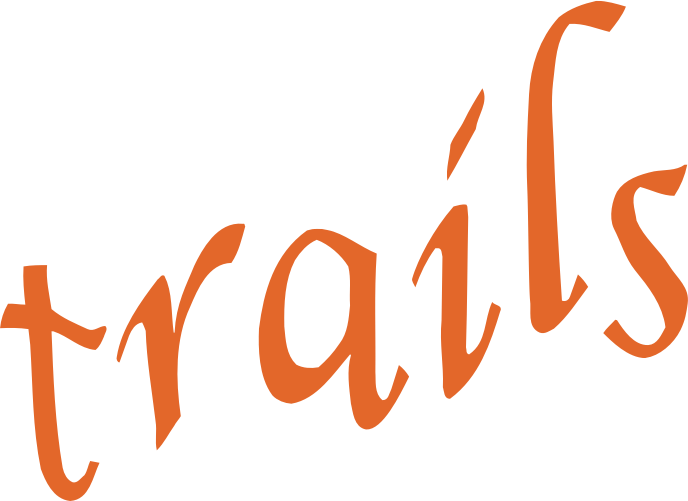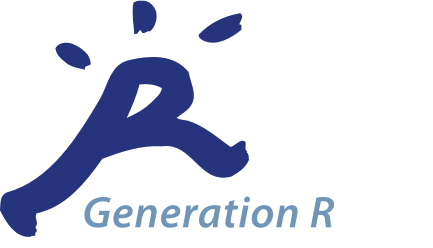-
measure Absenteeism
Study: TRAILS Mode of collection: SelfAdministeredQuestionnaire Available measurements: Population cohort T1 T2 T3 T4 T5 T6 T7
Clinical cohort T1 T2 T3 T4 T5 T6Assessment of absence from school or work.Created March 28, 2023 • Updated March 28, 2023 -
measure Actigraphy
Study: Generation R Mode of collection: MeasurementsAndTests Biological sample/measurement Available measurements: Main Cohort 11 years 13-14 yearsThis dataset has no description
Created May 3, 2023 • Updated May 3, 2023 -
measure Antisocial Behaviour Questionnaire (ASBQ)
Study: TRAILS Mode of collection: SelfAdministeredQuestionnaire Available measurements: Population cohort T1 T2 T3 T4 T5 T6
Clinical cohort T1 T2 T3 T4 T5 T6Validated assessment of antisocial and delinquent behaviour. Includes aggression, vandalism, theft, anti-normative behaviour, and drug-related problems.Created March 28, 2023 • Updated March 28, 2023 -
measure Asthma and allergies
Study: Generation R Mode of collection: SelfAdministeredQuestionnaire Available measurements: Main Cohort 9-10 years 13-14 yearsThe questions concern children's asthma and allergies.Created May 3, 2023 • Updated May 3, 2023 -
measure Body composition and bone mineral density (dual X energy absorptiometry (DXA)...
Study: Generation R Mode of collection: MeasurementsAndTests Biological sample/measurement Available measurements: Main Cohort 6 months 5-6 years 9-10 years 13-14 years Covid questionnairesThis dataset has no description
Created May 3, 2023 • Updated May 3, 2023 -
measure Bone fractures
Study: Generation R Mode of collection: SelfAdministeredQuestionnaire Available measurements: Main Cohort 9-10 years 13-14 years Covid questionnairesThe question concerns if child and the mother had broken bones, at what ages, what bone was broken and whether it happened in trauma.Created May 3, 2023 • Updated May 3, 2023 -
measure Bone mineral density and geometry of the tibia (Peripheral Quantitative Compu...
Study: Generation R Mode of collection: MeasurementsAndTests Biological sample/measurement Available measurements: Main Cohort 9-10 years 13-14 years Covid questionnairesMeasurements of bone mineral density by peripheral quantitative computed tomography (CT) or dual X energy absorptiometry (DXA) scan. Geometry of the tibia by CT scan and body composition by DXA scanCreated May 3, 2023 • Updated May 3, 2023 -
measure Brief Symptom Inventory (BSI)
Study: Generation R Mode of collection: SelfAdministeredQuestionnaire Available measurements: Main Cohort Mid pregnancy 2 months 6 months 3 years 9-10 years 13-14 years Covid questionnaires 17-18 yearsThe Brief Symptom Inventory (BSI) consists of 53 items covering nine symptom dimensions: Somatization, Obsession-Compulsion, Interpersonal Sensitivity, Depression, Anxiety, Hostility, Phobic anxiety, Paranoid ideation and Psychoticism; and three global indices of distress: Global Severity Index, Positive Symptom Distress Index, and Positive Symptom Total....Created May 3, 2023 • Updated May 3, 2023 -
measure Bullying and victimization
Study: Generation R Mode of collection: SelfAdministeredQuestionnaire Available measurements: Main Cohort 5-6 years 8 years 13-14 years Covid questionnairesUsing teachers, main caregiver, and self reports, three forms of common bullying involvement: physical, verbal, and relational, were assessed.Created May 3, 2023 • Updated May 3, 2023 -
measure CITO score
Study: NTR Mode of collection: MeasurementsAndTests Behavioral/cognitive task Available measurements: Young Netherlands Twin Register YS_TRF5 YS_TRF7 YS_TRF10 YS_12 YS_TRF12 YS_DHBQP YS_DHBQ14 YS_DHBQ16 YS_DHBQ18 YC_BS1 YC_BS2 YE_ATTEF2 YS_CITO YS_DT YS_TRIP12The CITO-test is a standardized test for educational achievement that is administered in the final grade (when children are 11 or 12 years old) of elementary school. The CITO-test consists of multiple choice items in 4 different educational skills, namely Arithmetic, Language, Study Skills, and Science and Social Studies. All scores on the scales are...Created March 28, 2023 • Updated April 4, 2023 -
measure Child Behavior Checklist (CBCL) 6-18
Study: Generation R Mode of collection: Available measurements: Main Cohort 9-10 years 13-14 years Covid questionnairesThe Child Behavior Check List (CBCL 6-18) is part of the Achenbach System of Empirically Based Assessment (ASEBA) taxonomy and is a validated instrument to assess psychiatric symptoms in both clinical and research settings. The ASEBA parent report version for youths 6 to 18 years of age potentially includes the syndrome scales Anxious/Depressed,...Created May 3, 2023 • Updated May 3, 2023 -
measure Child Behavior Checklist (CBCL) 6-18
Study: Generation R Mode of collection: SelfAdministeredQuestionnaire Available measurements: Main Cohort 7 years 8 years 9-10 years 13-14 years Covid questionnairesThe CBCL competence scales from CBCL version 6-18 years were administered to gain insight in children's competence on an activity level, a social level, and a school level. The CBCL competence scales consist of a total of 20 items, for instance, focusing on the total number of sports or organisations the child participates in and how active they are...Created May 3, 2023 • Updated May 3, 2023 -
measure Child Behavior Checklist (CBCL) 6-18
Study: TRAILS Mode of collection: SelfAdministeredQuestionnaire Available measurements: Population cohort T1 T2 T3
Clinical cohort T1 T2 T3The Child Behavior Check List (CBCL 6-18) is part of the Achenbach System of Empirically Based Assessment (ASEBA) taxonomy and is a validated instrument to assess psychiatric symptoms in both clinical and research settings. The ASEBA parent report version for youths 6 to 18 years of age potentially includes the syndrome scales Anxious/Depressed,...Created March 28, 2023 • Updated March 28, 2023 -
measure Children's Body Image Scale
Study: Generation R Mode of collection: SelfAdministeredQuestionnaire Available measurements: Main Cohort 9-10 years 13-14 yearsThe Body Image Scale consists of seven gender-specific figures in ascending order of adiposity, which correspond with actual sex-adjusted body mass index (BMI) categories, including underweight, normal weight, overweight and obesity. Using the same figures, children’s satisfaction with their body size was also assessed.Created May 3, 2023 • Updated May 3, 2023 -
measure Children’s Social Behavior Questionnaire (CSBQ)
Study: TRAILS Mode of collection: SelfAdministeredQuestionnaire Available measurements: Population cohort T1 T2 T3 T4
Clinical cohort T1 T2 T3 T4Validated assessment of autism spectrum problems. Includes tuning behaviour/emotion to the situation, social contact, social insight, fear of and resistance to change, stereotyped behaviour, and orientation problems in time, place or activity.Created March 28, 2023 • Updated March 28, 2023 -
measure Columbia Impairment Scale (CIS)
Study: TRAILS Mode of collection: SelfAdministeredQuestionnaire Available measurements: Population cohort T1 T2
Clinical cohort T1 T2Validated assessment of impairment in different domains of daily life. Includes interpersonal relations, broad psychopathological domains, functioning in job or schoolwork, and leisure time.Created March 28, 2023 • Updated March 28, 2023 -
measure Demographics
Study: NTR Mode of collection: SelfAdministeredQuestionnaire Available measurements: Young Netherlands Twin Register YS_1 YS_2 YS_3 YS_5 YS_TRF5 YS_7 YS_TRF7 YS_10 YS_TRF10 YS_12 YS_TRF12 YS_DHBQP YS_DHBQ14 YS_DHBQ16 YS_DHBQ18 YC_ACTIONBB1_1 YC_ACTIONBB1_2 YC_ACTIONBB2 YC_ACTIONBB3 YS_VAL YC_BS1 YC_BS2 YC_BS3 YC_DSC YE_FITNSS YE_ATTEF1 YE_ATTEF2 YE_ATTEF3 YC_ADHMRI YS_DT YE_COG10 YE_COG12 YE_COG18 YS_TRIP1 YS_TRIP1_2 YS_TRIP3 YS_TRIP4 YS_TRIP5 YS_TRIP7 YS_TRIP10 YS_TRIP12Demographic information, including age and year of birth, biological sex and gender, country and place of birth, current zipcode, nationality, religion, educational attainment, spoken laguages, and information on multiple birth.Created March 28, 2023 • Updated April 4, 2023 -
measure Development and Well-Being Assessment (DAWBA)
Study: Generation R Mode of collection: SelfAdministeredQuestionnaire Available measurements: Main Cohort 9-10 years 13-14 years Covid questionnairesThe Development & Well-Being Assessment (DAWBA) measures the engagement in compensatory behaviors during the past three months to lose weight or to prevent weight gain. Eight compensatory behaviors were assessed: eating less during meals, meal skipping, not eating for a whole or large part of the day, hiding or throwing away food received from others,...Created May 3, 2023 • Updated May 3, 2023 -
measure Diffusion Tensor Imaging (DTI)
Study: Generation R Mode of collection: MeasurementsAndTests MRI Available measurements: Main Cohort 7 years 9-10 years 13-14 years Covid questionnairesDiffusion Tensor Imaging (DTI) is a Magnetic Resonance Imaging‑based neuroimaging technique that makes it possible to estimate the location, orientation, and anisotropy of the white matter tracts of the brain.Created May 3, 2023 • Updated May 3, 2023 -
measure Dutch Eating Behavior Questionnaire (DEBQ)
Study: Generation R Mode of collection: SelfAdministeredQuestionnaire Available measurements: Main Cohort 9-10 years 13-14 years Covid questionnairesThe Dutch Eating behavior Questionnaire (DEBQ) was used to assess restrained eating behavior. The DEBQ’s Restrained Eating subscale consists of 10 items assessing the tendency to eat less than desired to lose or maintain body weight. Each item is answered on a 4-point Likert scale.Created May 3, 2023 • Updated May 3, 2023



